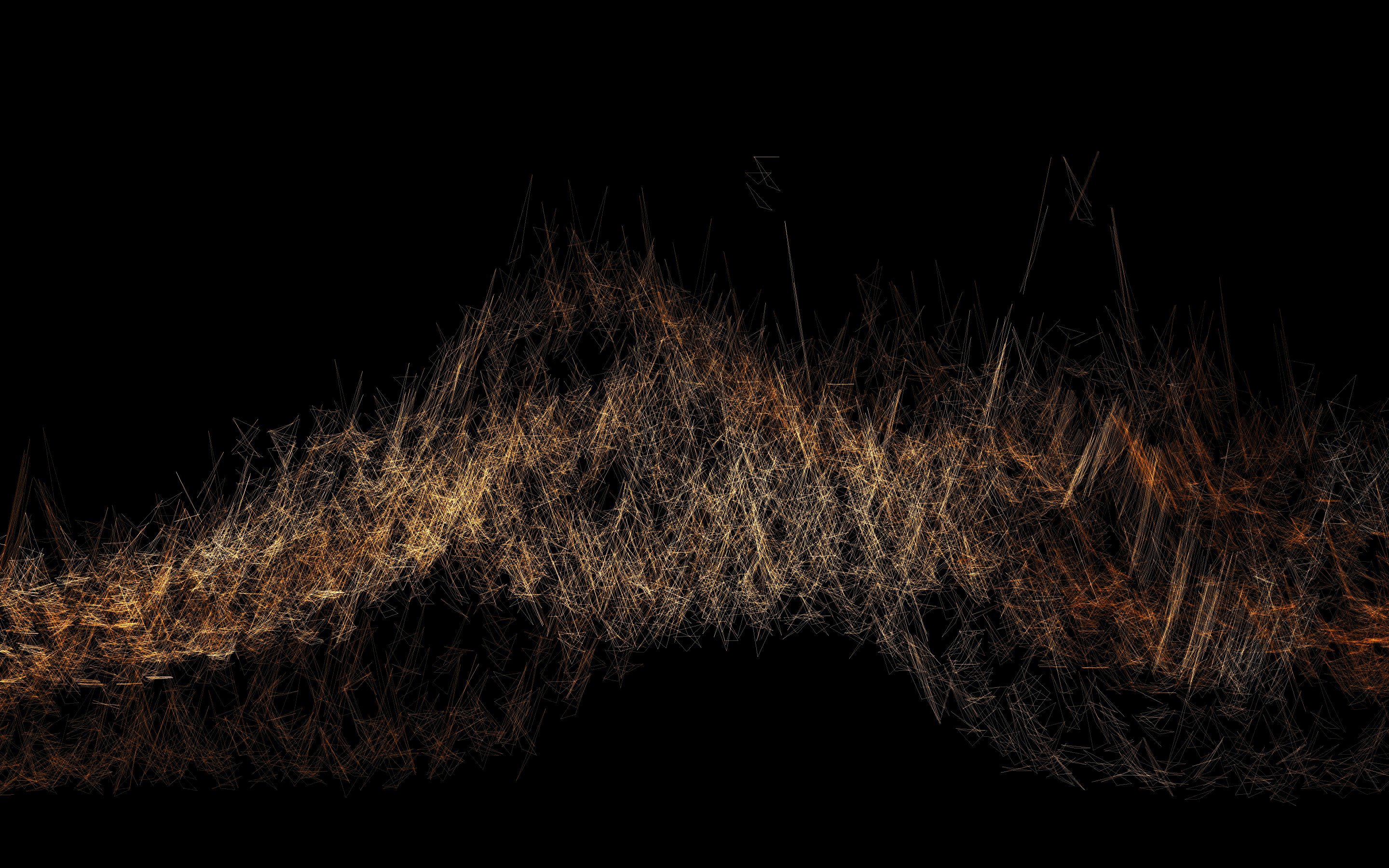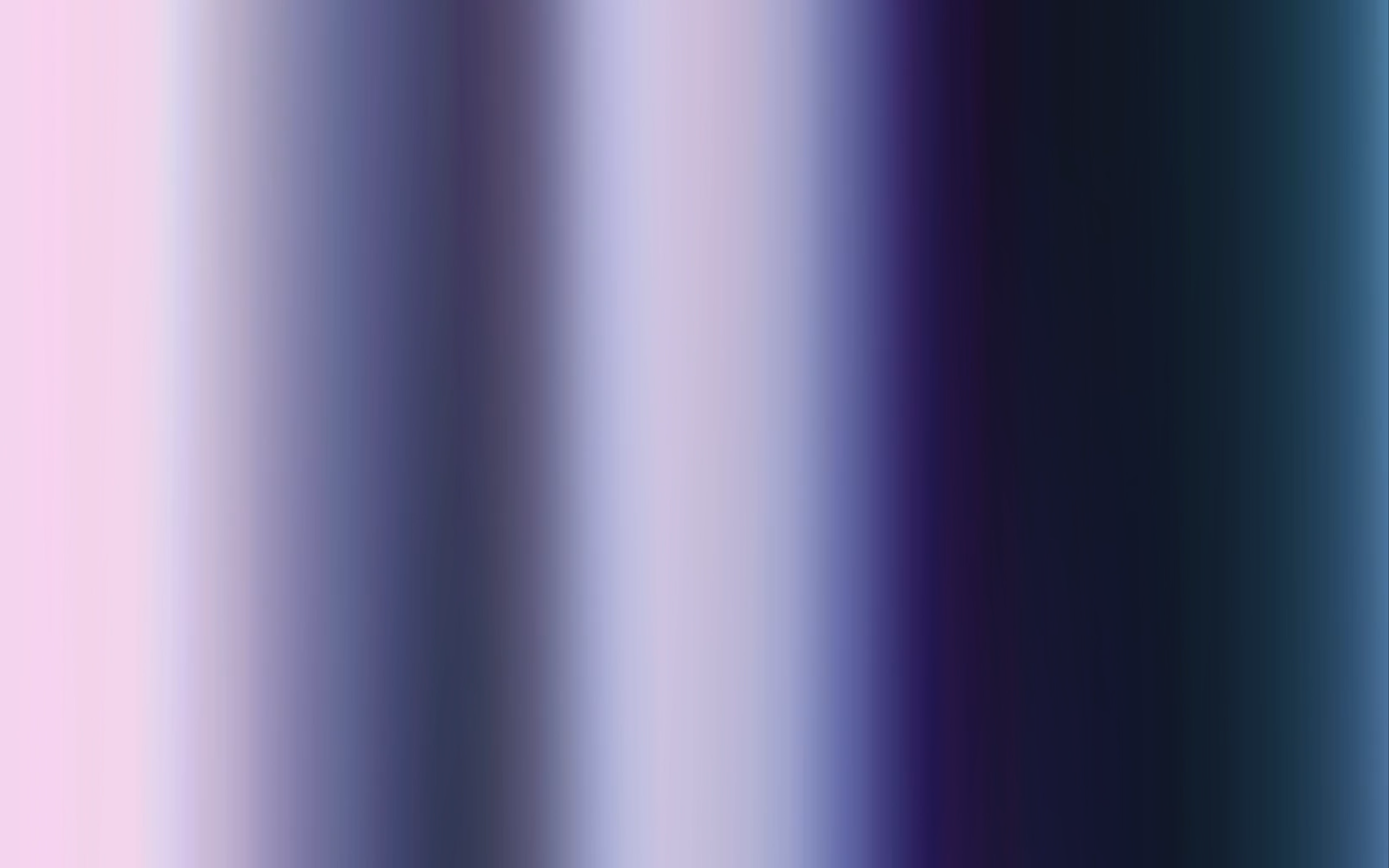For the new collection Παλμός (palmós), that was recently launched on Sedition, you collected and used data from your own heartbeat and breath rhythm. Could you talk a bit about the inspiration behind this work? What ideas did you intend to explore?
Pandelis Diamantides: Παλμός (palmós) translates to 'pulse', a 'heartbeat'. The art collection contextualises the heart as a metaphor for emotion, and the notion of vibration as a connecting element between physical, biological, and social activity. Data collected from a single vibration, a beating heart, and the amount of movement of the crowd around a social point of interest, are used to navigate the parameters of bespoke software for artistic creation. The result is a collection of three works that explores the universal experience of cardiac activity in response to thought, emotion, and movement. As a strategy of coping with the stress of social isolation during the Covid-19 pandemic, I observed and measured my own heartbeat and breath rhythm at regular intervals. By observing my body reactions, becoming conscious of the connection between my own pulse and that of the world, I retained a feeling of togetherness during the continuous lockdowns.

Παλμοί / Pulses by Pandelis Diamantides
What are the recurring themes or concepts in your new works?
Pandelis Diamantides: As an artist I seek to create an aesthetic language. With every artwork I expand her vocabulary. When I’m creating new work I’m interested in exploring uncharted emotional landscapes. I feel there is so much more than words can describe. I aspire to create a direct experience with sound and light, using the screen as a medium rather than a representational canvas. If there is anything interesting in composing, sound or image, with or without computers, is the opportunity to deal with abstract concepts while manipulating concrete material. Serving as a beacon of creativity, this idea has guided my work from the very beginning.

Camp Out on Asteroids, Pandelis Diamantides
Go Back to Hiding in the Shadows presents a digital granary of processed instrumental and electronic sounds, field recordings, rock formations, plants, animals and swarms. Could you please tell us about the making of the series?
Pandelis Diamantides: Go Back to Hiding in the Shadows is a personal journey towards a more introverted way of living. While creating the narrative of the work I wanted to discover for myself what it is that connects me with the region (Cyprus, Eastern Mediterranean) where I grew up and developed the foundation of my personality and view of the world. I realised that what we people accept as place of origin, is what the establishment imposes on us, which is usually the fabricated idea of nation and country. I visited the area again and again trying to understand what that meant to me.
You’ve lived in various countries including Cyprus, Greece, and the Netherlands. How Does your practice speak of different environments and geographies you’ve lived in?
Pandelis Diamantides: I live and work alternately in Cyprus, Greece and the Netherlands. For some years Germany, Berlin was part of my yearly rhythm as well. I seek to explore place and identity as mutually defining forces whose interactions cannot be simplified or easily represented. Rapidly changing environments and the diversity of geographies offer a sense of detachment from a reality that puts limits on the seemingly infinite possibilities. My practice consists of a complex, heterogeneous set of elements abstracted from the places I’ve been.

With Every Tear a Dream, Pandelis Diamantides

What’s the story and inspiration behind the title of the work Quickly Photographed and Released Unharmed?
Pandelis Diamantides: Quickly Photographed and Released Unharmed is part of an ongoing research into the non-representational use of screens. The collection reflects on our visually overstimulated environment. The title refers to the idea that we do not need to take possession of our environment to experience it. What we own is how that experience is reflected on our memory through our perception. To illustrate this idea the artworks of the collection carefully deploy light as a medium; after-images from previous frames are superimposed over newer frames in the vision of the viewer. This optical layering means that light patterns perceived by the eye and brain complement the visual material currently presented on screen. By exploiting the neural mechanisms underlying visual perception the viewer becomes an integral part of the artwork, simultaneously the observer and the creator.
You’ve presented your work at various international festivals, concert halls and events. What do you enjoy the most about your audio-visual performances?
Pandelis Diamantides: During the live performance audible generative structures provide the canvas for a visual interpretation of time, motion and memory. As a measure of disorder an immersive audiovisual world is created, a temporal construct of bass, light and colour. Sound and visuals work together in an ephemeral manner. Each and every space is unique and influences the performance. Not only the atmosphere but also the physical characteristics of the space, absorbing acoustics and richness of texture both visually and aurally will influence the performance. And the audience, the atmosphere people create, individuals with their presence. I feel very connected during a live performance and that reflects on how I develop the artwork in present time.
Who or what inspired you lately?
Pandelis Diamantides: I got inspired from the people in my direct environment, the people around me. Daily people and daily life. Also the people I met in the walks I take every day. I sometimes walk for hours in human-made environments or in nature and I allow myself to observe in a way that seems removed from everyday life. There is something transcendental in small moments. To use the words of Raoul Vaneigem, writer of The Revolution of Everyday Life and member of Situationist International, 'there are more truths in twenty-four hours of a human’s life than in all the philosophies'.
Could you tell us about your future projects? What excites you the most about this year?
Pandelis Diamantides: At this moment I’m working on the musical album and the audio-visual performance counterpart of Παλμός that I hope to have ready in 2023.
In parallel, I’m sketching another series of works about silence and monochromes, a study on the various manifestations of the colour blue. Of course, my priority and what excites me at the moment is to share Παλμός with as many people as possible, reflect on the work, exchange ideas and share experiences.
